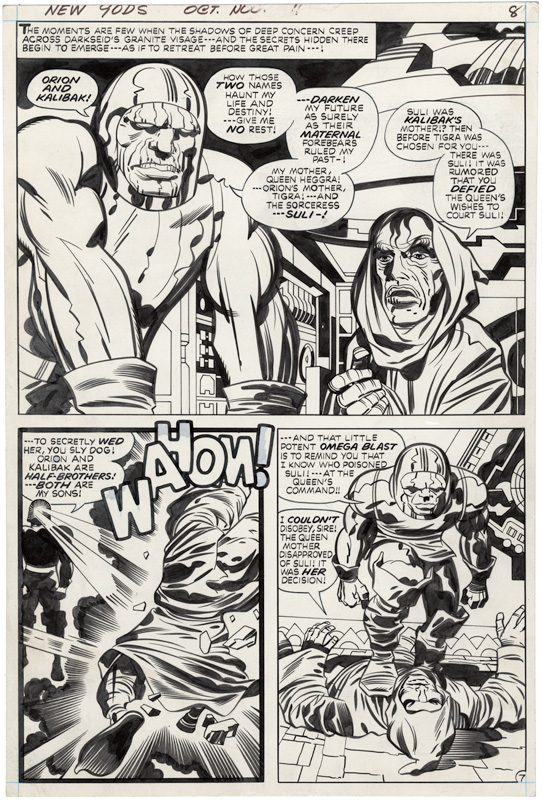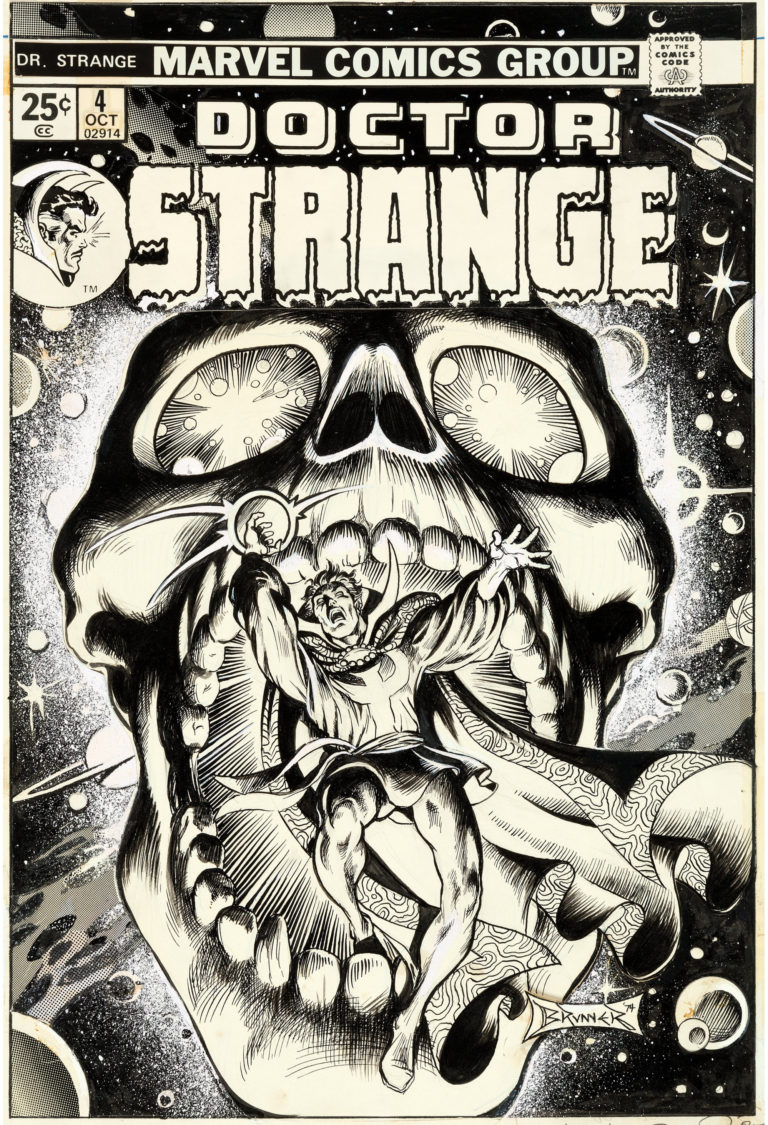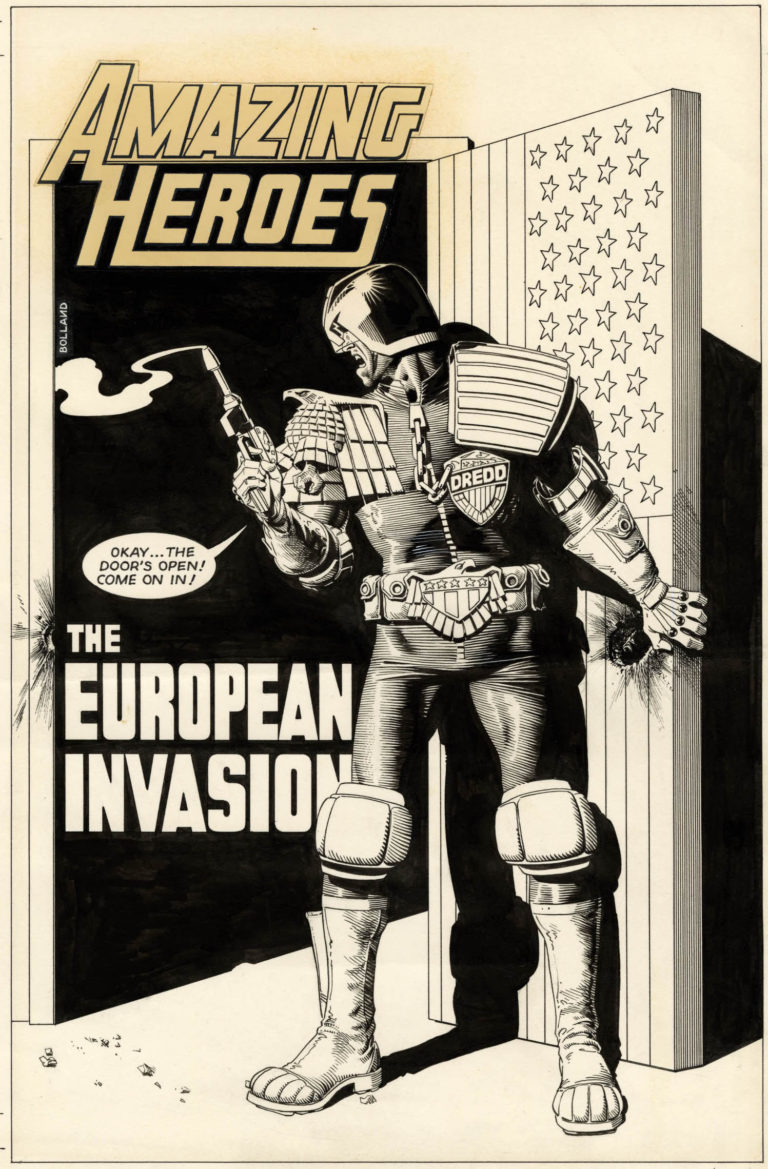
Year One Pathway To Collecting Comic Art
In this article we will lay a path for a new collector to follow for their first year. All new collectors make the same few mistakes in one way or another, so we will talk about how to avoid them. During this time one should focus on becoming as educated about the hobby and art as possible. All collectors should realize collecting is a long process and aim to build the best collection over the long term. Please read this if you have never bought a piece of art before, or are in the early stages. It will without a doubt provide you with a leg up entering this hobby. It is very rare to meet a collector who doesn’t wish he could go back in time and do many things differently. Think of this article as your cheat sheet.
The First 6 Months
If you are new to this hobby, my first and most important suggestion is not to buy anything, at all, for the first six months. You can watch the auctions and the dealer and artists updates. Talk to other collectors about topics that excite you. Read the books you love and identify the art you enjoy the most, just don’t buy anything!
A large portion of collectors own few to none of the first pieces they buy, as they are often in a rush to start collecting and make poor buying decisions. They pay too much for art. They buy art they don’t really love, or even like. They buy too much art. Most collectors tastes mature and change significantly over the first few years collecting. Few develop an “eye” for art until having spent some time in the hobby. Not buying art when getting started is your best bet on a building a quality collection over the long term!
To talk about it another way; the first and most important thing in this hobby, is patience. It is also one of the hardest things to learn and follow. The right art at the right price will simply not appear that often, and the collectors who do best are the ones who can wait for it. There will always be more far art you want then funds to buy it for the vast majority of collectors(over the long term). Not having the money to secure the right piece because you spent it in other you don’t really like is a huge mistake.
So if you can hold off on buying the first 6 months, what should you do to become a more intelligent collector?
First shameless plug, follow CAG. We keep collectors up to date in all corners of the market, and regularly post educational articles for collectors, old and new. Watch the various auctions and see what you like, track prices to start to get a feel for value. Create accounts and get a feel for the sites. Bookmark your favorite dealer sites. Follow your favorite artists on social media. Learn the landscape of the art market.
Read comics! See which art really makes you happy. Sometimes the comic art collecting hobby becomes detached from the comic books themselves. It is shocking sometimes to see how often collectors buy art from books they have never actually even read! If you don’t care about a book enough to read it, the art probably doesn’t belong in your collection. What really interests you is it covers? The idea of owning multiple sequential panel pages? Simply the ownership of something drawn by the all time greats? Think about what really makes you tick as a collector.
Save funds dedicated to purchasing art. Since we aren’t spending, start to set aside money solely for comic art, so when the time comes it is available we have the funds ready. Cash is king in this hobby, so liquid funds are key.
If you need to buy something pick up a few artists editions. These are full size high quality original art reproduction books that are a blast to go through. You will learn tons about art without even trying. Picking up a few volumes of works from your favorite artists is a great entryway into the hobby.
Go to conventions. This can be especially important if you have never seen OA in person before(artist editions work well for this as well), or only a few limited pieces. Art can look very different in person than in scans. There are artists whose work pops in person, and the opposite can happen as well.
There are two important lists I suggest collectors make. At least a file on your computer, even better if you actually make hard copies.
First, create a list of the examples you would like to add to your collection. Specific Artists/Background/Characters that you feel you must have an example of in your collection. Write as many as you would like.
Second create a list of your absolutely most desired pieces, your grails. Limit this list to 50 or so max. These should be pieces that are burnt into your brain, so that you don’t even have to reference them to know what they are.
Decide on how you will store and or frame your art. Figure out what type of portfolios you want and a good place to store art in your home. Find a reputable frame shop in your area if you want to go that route. Expect to pay $200-250 minimum for a quality frame job of an 11×17 piece of art.
Missing Out On Pieces
At this point you are probably saying great ideas, but I can do these and buy art at the same time. I don’t want to take the chance of missing out on any pieces. Don’t worry, one thing all collectors learn is there another piece of art will always come along. ALWAYS. Sure, I guess there is that chance that the one piece you covet more than almost anything pops up for sale, but it is pretty unlikely. If a piece does come from your list of grails you made? Sure you can break the rule of waiting. But do this for nothing else! Trust me, 99% of collectors do not having to worry about “missing out” on art. Please just wait!

Months 6-12
Time to get redundant…..do the same things! Review everything. Look back at pieces that interested you that came to market. Do you feel the same about them? Are there any you kind of wished you bought. Are there any you are happy you didn’t buy? I bet there will be some of both.
Look at your 2 lists, have they changed? I will bet they have. Update them as necessary. At this point hopefully you have figured out how you will store your art and have got to see some pieces in person. Never stop learning and discovering new art!
The change at this point is that you can now think about buying art. I would honestly suggest to wait until you have put a year in, but I understand that is probably too much to ask and may drive many crazy. I am tempted to suggest buyer play in the shallow end of the pool(3 figure art), as it is better to make mistakes at lower prices than high. But it is up to you. At a minimum make sure any example you go after is on your first list you created. Don’t just buy something random on a whim! Oftentimes collectors get sucked into the flavor of the month. It might be a new book that is popular. It might be an artist who the market starts to offer many works. It’s better to stay away from these as a new collector, and oftentimes as an experienced collector. Don’t buy a ton. If you are getting a new piece every other week, you are buying way too much and not evaluating art as thoroughly as you should.
Learn, learn, learn! Learn as much about the hobby as you can. No one knows everything, so there is always something new to explore in the hobby.
Transitioning from Comics to Comic Art
A quick segue before we end, what specifics should one consider if you are coming to art after building a significant comic collection? It is after all one of the most common pathways into the hobby. Comic collector gets bored buying comics and then decides to move into art. Happens all the time! Here are a few quick morsels that will help the transition.
First, there is one situation that I have seen occur far too often to not warn against it. A collector drifts into comic art, then at some point decides to dive completely in and liquidate their valuable comic collection. They end up building this huge fund for art. They then proceed to spend it all within 6 months, either buy a ton of less pricey pieces or a few big ones. They overspend and buy stuff they didn’t really want. Then stuff comes up they actually want and they sell these first rushed purchases, losing money on them because they overpaid and paying juice to an auction house. Their initial fund from selling their collection for buying art plummets 40 percent after all is said and done. Rinse in repeat sometimes for those who don’t learn the lesson the first time. In less than 3 years the value of their initial fund has been cut by more than half. A complete disaster! Patience please! Don’t let this happen to you. Learn the hobby before you shell out those valuable funds from selling your comics.
Next let’s quickly talk about sketch covers. Sketch covers are often popular to comic collectors as they are more familiar to them. Especially since they can be graded and “authenticated.” There are several drawbacks to sketch covers. First is the size, they are tiny. Second is often times the cover stock is harder to illustrate on than a traditional bristol board. Third is that often time artists actually charge just as much for a sketch cover as they for something on a larger board. Sketch covers can be fun, but most art collectors skew towards collecting art on traditional materials so keep this in mind. I would recommend collectors skip sketch covers all together.
Finally recognize the differences between the two hobbies. In general comic collecting is simpler to understand. Key issues and classic covers are desirable. The higher a grade and the rarer a book the higher the price. Most comics can be treated as commodities, as sales happen frequently so pricing data is readily available. Comic art is a different animal(if read the rest of CAG you will of course know how!)
This hobby is still a constant learning process for those that are willing, no one knows everything. That being said the more effort you put in to learning the market and the craft, the better a collection you will build. If you have read the CAG articles sequentially at this part you have everything you need to get started collecting comic art. We are almost through the CAG and the final articles will expand your horizons as a collector and will be geared more towards those with some experience collecting art. To those who are new welcome to the hobby and enjoy the ride. To those experienced collectors let’s talk about improving our collections!


